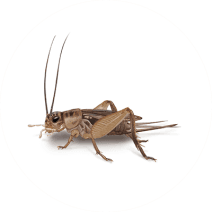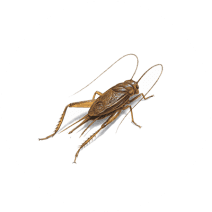Cricket Types & Information
Frequently Asked Questions Crickets
- Uncategorized FAQ
- How did I get crickets in my yard?
-
Crickets like to leave outside. However, if the conditions are met for crickets in your home, that's were they will go too. Some of the right conditions are:–
-
–
- Bright outdoor lights
-
Moisture in homes–
-
Poorly sealed gaps–
-
- What is signs of cricket infestations?Possible signs that you may have a cricket infestations are: Damage to agricultural Lots of Chirping Lots a cricket in bunches throughout lawn
- About Crickets
- Are Crickets Dangerous?In case crickets get inside the house, they are even more of a nuisance than a serious problem. These types of pests are nocturnal and chirp to each other all night long, making issues that tend to be poorly meant for a good night’s sleep. Damage They're a destructive presence in farming communities, because they feed upon crops and seedlings at night. They invade in signifigant amounts and some species may go after fabrics and can destroy clothes.

Behavior
Appearance
- Crickets renew soil minerals by decomposing plant and animal-based materials. Additionally , they supply food for more animals, including:
- Birds
- Lizards
- Rodents.
Size:
House crickets measurement is 16 to 22 mm in size. Field crickets can develop to measure even more than 2.5 cm in total. Ground crickets are much smaller than many other common crickets.
Color:
House crickets are generally light yellowish-brown in color and exhibit 3 dark-colored bands on top of their heads. Field crickets are brown or black in color. Ground crickets are brown.
Wings:
Held flat up against the body, their wings cover at least half of their abdomen, however, some species are wingless. Young look the same as adults, even though their wings are underdeveloped.
Characteristics:
Females have a extended ovipositor in the rear end, which is used to lay eggs inside the soil, and both genders have segmented, taillike appendages referred to as cerci.
Diet
- Crickets are omnivorous, which mean that they will eat:
- Crops
- Plant and animal-based material
- Seedlings.
Cricket Chirp
Crickets have different chirping “songs” for:
Attracting mates
Fighting
Sounding alarms
Habitat
The majority of crickets choose moist, damp environment. Residents may possibly notice these pesky insects in numerous places including:
Bathrooms
Basements
Crawl spaces
Under logs and rocks
Life Cycles
Crickets undertake a gradual metamorphosis starting egg to nymph to adult. Whenever attracting a partner, male crickets generate sound by rubbing their forewings against each other. Their particular songs attract their species.


